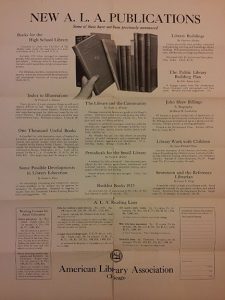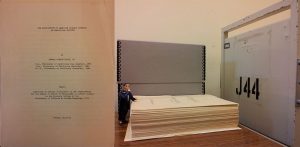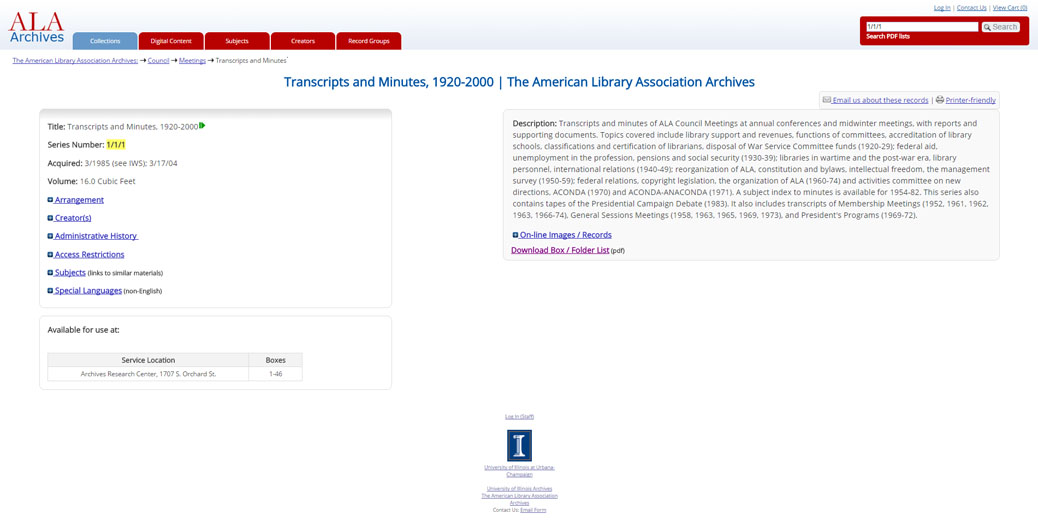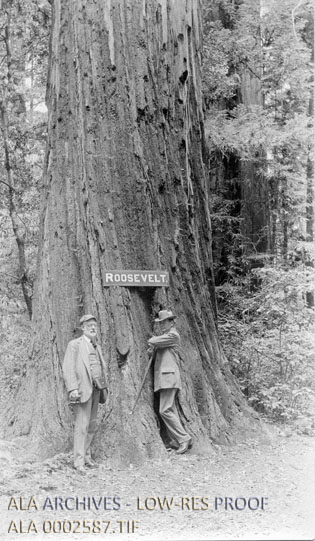Blog Post by Yung-hui Chou
During the Spring 2024 semester, I worked at the ALA Archives and gained valuable archival experience. For MSLIS students at the University of Illinois Urbana-Champaign like myself, a practicum is a credit-earning field experience supervised by our selected information organization. Given my interest in both archival careers and the history of libraries and librarianship, I couldn’t think of a more suitable practicum site than the ALA Archives.

I am very thankful to my site supervisor Cara Bertram, the ALA’s Archives Program Officer, for offering me a well-round experience. Cara thoughtfully assigned me projects that sequentially built my knowledge and skills in archival processing. I started with interfiling (adding new items to existing records) and updating finding aids, gradually advancing to arranging and describing an entire record series. Throughout the semester, I participated in a variety of tasks, including inventorying backlog materials, writing biographical notes, digitizing photographs, organizing born-digital materials, creating metadata for digital collections, and collecting information for the archives’ reference services. Working in a small unit means one has the opportunity to handle all aspects of archival work, which is the most beneficial part for practicum students. Continue reading “My Practicum Experience at the ALA Archives”
 Fifty years ago on this day, ALA announced the transfer of its archives to the University of Illinois at Urbana-Champaign. The genesis of the ALA Archives can be arguably traced back to 1910 with the acceptance of the
Fifty years ago on this day, ALA announced the transfer of its archives to the University of Illinois at Urbana-Champaign. The genesis of the ALA Archives can be arguably traced back to 1910 with the acceptance of the 





